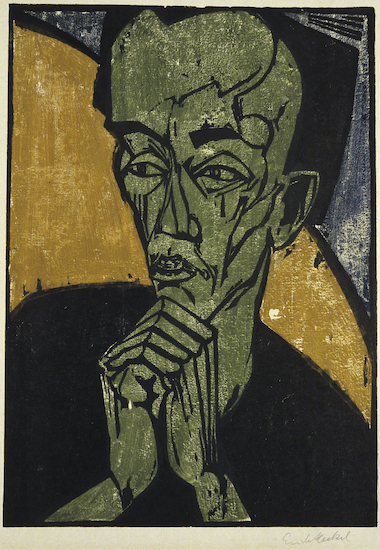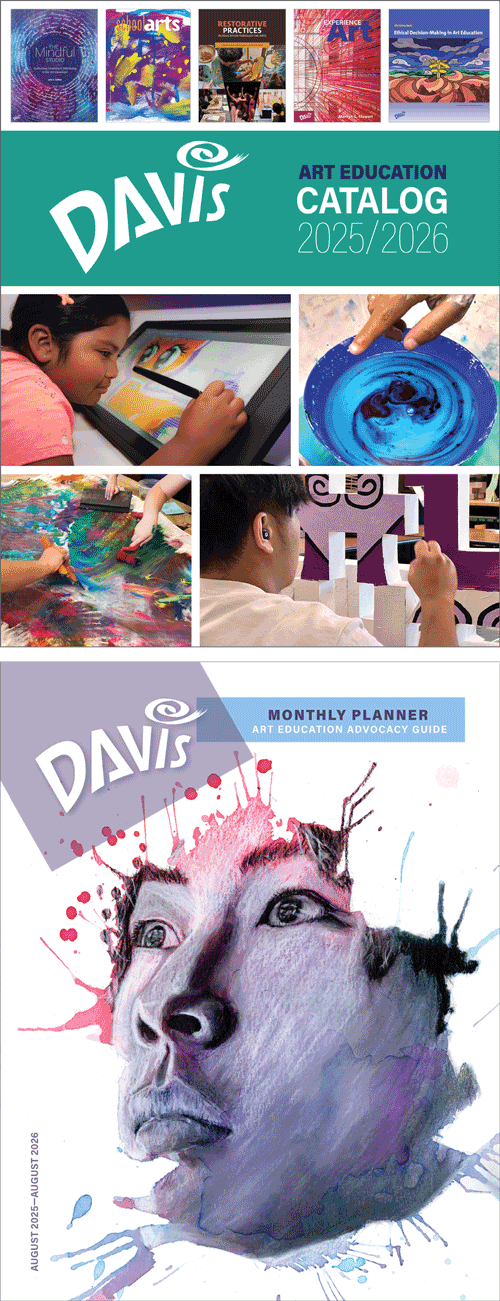Artist Birthday: Erich Heckel
Erich Heckel was a German Expressionist and a member of the important early artists’ group Die Brücke, a group that worked communally from 1905 to 1913. He is renowned for his woodcut prints.
Artist Birthday for 31 July: Erich Heckel (1883–1970 Germany)
Erich Heckel was one of the German Expressionist artists most responsible for the revival of the importance of woodcut prints.
 |
| Erich Heckel, Portrait of a Man, 1919. Color woodcut on paper, 46 x 32.6 cm. The Cleveland Museum of Art. © 2025 Erich Heckel / Artists Rights Society (ARS), New York. (CL-882hkars) |
German Expressionists were influenced greatly by the German tradition of woodblock printing that goes back to the early 1400s. Rather than emulating the sophisticated woodcuts of Renaissance artists such as Albrecht Dürer (1471–1528) or Hans Baldung (1474–1545), Expressionists preferred the rough examples of the early 1400s, complete with careless hand-coloring, carving mistakes, and crude, jagged, uneven contour lines. Heckel's Portrait of a Man reflects this Expressionist disregard for sophisticated hatching and cross-hatching seen in works by artists such as Dürer.
Portrait of a Man, a self-portrait, Heckel produced soon after Germany's defeat in World War I (1914–1918). Heckel allowed the basic characteristic of the material evident in the rugged lines, the cutting largely determined by the wood grain. The jagged, hacked lines in the face reflect the artist's exhausted, emotional state of having lived through the war. The uneven coloring, caused by applying the ink with a brush rather than a roller to the woodblock, heightens the haggard, pallid state of the artist, making this selfie a fatigued reflection on Germany's defeat and despair for the future.
Expressionism in northern European art of the early 1900s was an offshoot of art movements in the late 1800s that emphasized romanticism, expressive color, or symbolic (rather than representational) subject matter. The objective in expressionist work was to express the artist’s feelings about the subject and to elicit an emotional reaction from the viewer.
German Expressionists built on the aims of Post-Impressionist artists who rejected the Impressionist emphasis on optical accuracy and turned towards the world of the spirit. They employed a variety of styles to give visible form to their feelings, often relying on direct, sometimes crude expressions. Their art was basically an expression of inner meaning through outer form.
Late 1800s inspirations for German Expressionists included Vincent van Gogh (1853–1890), and Symbolist artists Edvard Munch (1863–1944) and James Ensor (1860–1949). Symbolism represented a rejection of the scientific emphasis of Impressionism of light and color in favor of pathos-heavy subjects from Greek and Roman literature as well as German Romantic literature depicted in the brilliant palette of Impressionism. Expressionists were also influenced by German medieval and Renaissance woodblock prints, non-western art such as African and Oceanic, folk art, and the art of the Romantic and Hellenistic periods in western art. Symbolism, by far, had the strongest impact on subject matter.
Heckel was born in Döbeln, Germany, and spent most of his childhood in Dresden and Chemnitz. In 1904 he took drawing and painting lessons in Chemnitz while working as a draftsman in an architecture firm. There he met future Expressionist Karl Schmidt-Rottluff (1884–1976). Both enrolled in architecture classes but abandoned it in 1906 to concentrate on painting. It was around this time that Heckel began to produce woodcuts, using them to teach himself how to flatten forms in his paintings. Along with Schmidt-Rottluff, Ernst Ludwig Kirchner (1880–1938) and Fritz Bleyl (1886–1966) in the same year Heckel helped found the artists’ group Die Brücke, meaning the bridge. The artists meant for their art to bridge the gap between traditional and modern art.
The Brücke artists were greatly influenced by Vincent van Gogh’s (1853–1890) palette and painterly methods. These characteristics began appearing in Heckel’s work around 1910. After 1907, when he started visiting Schmidt-Rottluff in Dangast, Heckel’s painting style achieved maturity. Like the other Brücke members, he moved to Berlin in 1911, then a hotbed of Expressionism. The Brücke group split up shortly after that. After the Nazis came to power in 1933, Heckel’s work was branded “degenerate”. During World War II (1939–1945), his studio and many of his works were destroyed by air raids in Berlin. After the war he taught at the Academy of Fine Arts in Karlsrühe from 1949 to 1955. He retired to a town on Lake Constance.

Comments